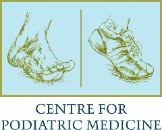Ingrown Toenails: Causes, Treatment, and Prevention Tips
Ingrown toenails can be an uncomfortable and bothersome condition that affects many individuals. Understanding the causes, recognizing the signs and symptoms, and knowing the treatment options are crucial for effective management.
In this blog, we will explore the common issue of ingrown toenails, shedding light on the underlying causes, discussing treatment options, and providing prevention tips to help readers avoid future occurrences.
Causes of Ingrown Toenails:
Ingrown toenails occur when the edges of the toenail grow into the surrounding skin instead of growing straight out. Several factors can contribute to the development of ingrown toenails, including:
- Improper Nail Trimming: Trimming the nails too short or rounding the edges can encourage the nails to grow into the skin.
- Tight or Improper Footwear: Wearing tight shoes or socks that put pressure on the toes can lead to ingrown toenails.
- Trauma or Injury: Stubbing the toe or experiencing trauma to the nail can cause it to grow abnormally.
- Genetics: Some individuals may have a genetic predisposition to developing ingrown toenails.
Signs and Symptoms of Ingrown Toenails
Recognizing the signs and symptoms of ingrown toenails is essential for early intervention and effective treatment. Common indicators include:
- Pain and Tenderness: The affected toe may be painful, especially when pressure is applied.
- Redness and Swelling: Inflammation and redness may be present around the ingrown nail area.
- Infection: If left untreated, ingrown toenails can become infected, leading to additional symptoms such as drainage, pus, and an unpleasant odor.
Treatment Options for Ingrown Toenails
Treatment for ingrown toenails depends on the severity of the condition. In mild cases, home remedies may suffice, while more severe or recurring cases may require professional intervention. Treatment options include:
- Soaking the Feet: Soaking the affected foot in warm water can help reduce inflammation and relieve pain.
- Proper Nail Trimming: Trim the nails straight across and avoid rounding the edges to prevent further ingrowth.
- Antibiotics: If there is an infection present, your healthcare provider may prescribe antibiotics to clear the infection.
- Partial Nail Avulsion: In severe cases, a podiatrist may perform a partial nail avulsion, a procedure to remove a portion of the ingrown nail and prevent future recurrence.
Prevention Tips for Ingrown Toenails
Taking preventative measures can significantly reduce the likelihood of developing ingrown toenails. Here are some helpful tips:
- Trim Nails Carefully: Cut your nails straight across, avoiding excessively short or curved edges.
- Wear Proper Footwear: Choose shoes that provide adequate room for your toes, preventing excessive pressure on the nails.
- Maintain Good Foot Hygiene: Keep your feet clean and dry, ensuring no moisture is trapped between the toes.
- Protect Your Feet: When participating in activities that may cause trauma to the toes, such as sports, wear protective footwear.
- Seek Professional Help: If you have recurrent or severe ingrown toenails, consult a podiatrist for guidance and tailored treatment options.
Conclusion
Ingrown toenails can cause discomfort and may lead to complications if left untreated. By understanding the causes, recognizing the signs and symptoms, and implementing preventative measures, individuals can effectively manage ingrown toenails and reduce the likelihood of future occurrences.
If you experience persistent or severe ingrown toenails, it is advisable to seek professional assistance from a podiatrist. With proper care and attention, you can maintain healthy and pain-free toes. To learn more, visit Centre for Podiatric Medicine now.


